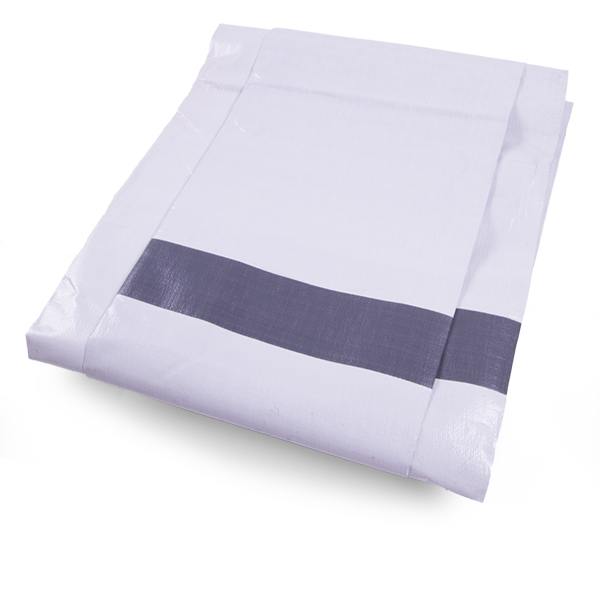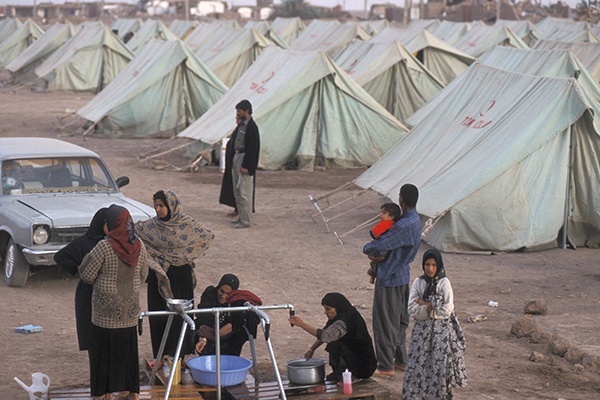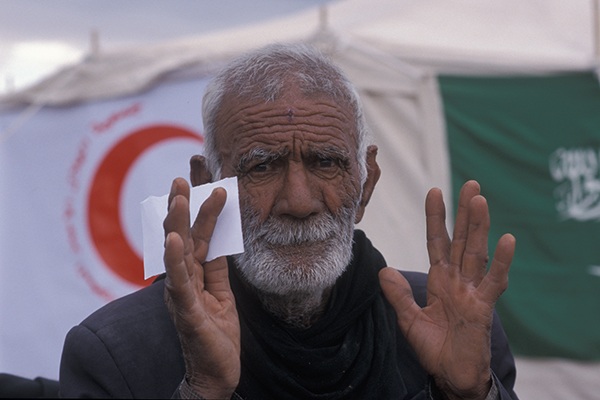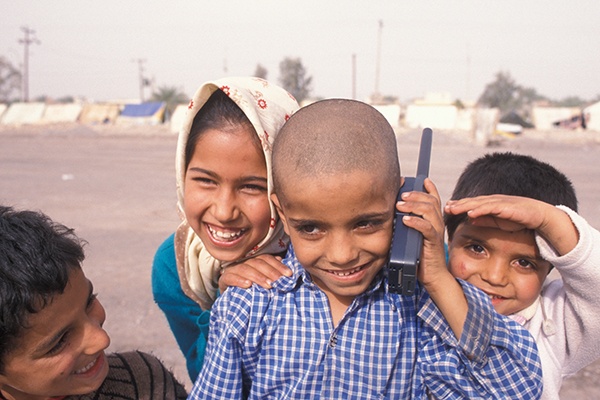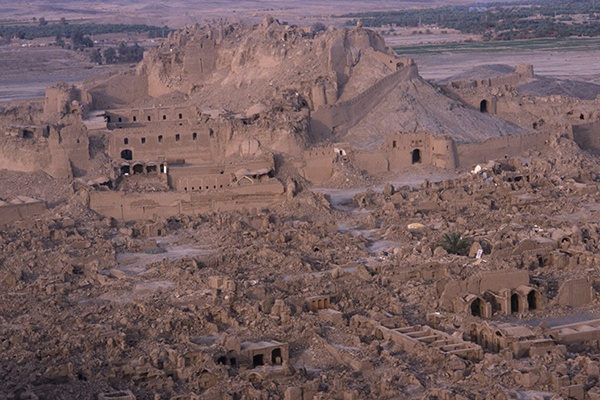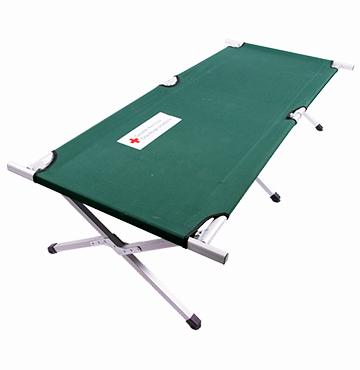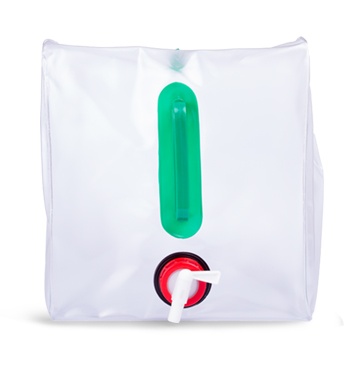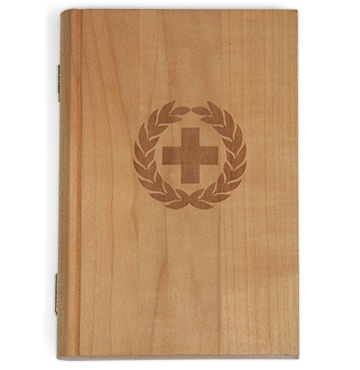Woven Flexible Tarpaulin
Often considered one of the most versatile tools in any aid worker’s toolbox, the humble tarpaulin is the most common shelter material whenever a disaster such as the 2003 Iran earthquake causes a humanitarian crisis. The massive quake, often referred to as the Bam earthquake, struck in the early morning of December 26, 2003 in the city of Bam in the Kerman province of southeastern Iran. It injured over 30,000, killed 41,000 and left roughly 75,000 homeless.
The Iranian Red Crescent Society jumped right into action, mobilizing volunteer teams from 12 branches across Iran to provide assistance right in the disaster zone. Throughout the emergency response, more than 8,500 IRCS staff and volunteers supported the relief efforts in Bam and helped to rescue more than 11,000 people from the rubble.
Asadullah Shoeleh, from an Iranian Red Crescent Society provincial branch 1,000 kms southwest of Bam, arrived at the scene with 80 rescue and relief workers one day after the quake. "We saw absolute destruction ... many people still trapped under the rubble," Shoeleh said. "Our search and rescue team worked tirelessly to find survivors."
The Restoring Family Links program was utilized by the Canadian Red Cross to help those in Canada searching for relatives in the earthquake affected area. Those who had not heard from their family were able to contact their local Red Cross office to submit a disaster welfare inquiry, which was then transferred to the Iranian Red Crescent Society.
"We saw absolute destruction ... many people still trapped under the rubble."
With so much devastation, the focus was immediately placed on putting up 200 tents for the thousands of people left without shelter in the cold winter. A woven flexible tarpaulin like this one are incredibly versatile, have an expected lifespan of two years minimum in the strongest tropical conditions.
The 2003 earthquake in Bam also marked the first time the United Nations and International Federation of Red Cross and Red Crescent Societies jointly launched an appeal. The joint appeal set a goal of $42 million to support the IRCS operation to assist 210,000 people for roughly eight months.
Funds raised during the campaign also went to restoring the primary healthcare and hospital referral services in the region, including a temporary 240-bed Red Cross Red Crescent hospital, three satellite clinics, mobile clinics, a rehabilitation centre and areas with psychological support.
In addition, the Canadian Red Cross donated these reinforced flexible tarpaulins for temporary shelter and water sanitation equipment.
Often considered one of the most versatile tools in any aid worker’s toolbox, the humble tarpaulin is the most common shelter material whenever a disaster such as the 2003 Iran earthquake causes a humanitarian crisis. The massive quake, often referred to as the Bam earthquake, struck in the early morning of December 26, 2003 in the city of Bam in the Kerman province of southeastern Iran. It injured over 30,000, killed 41,000 and left roughly 75,000 homeless.
The Iranian Red Crescent Society jumped right into action, mobilizing volunteer teams from 12 branches across Iran to provide assistance right in the disaster zone. Throughout the emergency response, more than 8,500 IRCS staff and volunteers supported the relief efforts in Bam and helped to rescue more than 11,000 people from the rubble.
Asadullah Shoeleh, from an Iranian Red Crescent Society provincial branch 1,000 kms southwest of Bam, arrived at the scene with 80 rescue and relief workers one day after the quake. "We saw absolute destruction ... many people still trapped under the rubble," Shoeleh said. "Our search and rescue team worked tirelessly to find survivors."
The Restoring Family Links program was utilized by the Canadian Red Cross to help those in Canada searching for relatives in the earthquake affected area. Those who had not heard from their family were able to contact their local Red Cross office to submit a disaster welfare inquiry, which was then transferred to the Iranian Red Crescent Society.
"We saw absolute destruction ... many people still trapped under the rubble."
With so much devastation, the focus was immediately placed on putting up 200 tents for the thousands of people left without shelter in the cold winter. A woven flexible tarpaulin like this one are incredibly versatile, have an expected lifespan of two years minimum in the strongest tropical conditions.
The 2003 earthquake in Bam also marked the first time the United Nations and International Federation of Red Cross and Red Crescent Societies jointly launched an appeal. The joint appeal set a goal of $42 million to support the IRCS operation to assist 210,000 people for roughly eight months.
Funds raised during the campaign also went to restoring the primary healthcare and hospital referral services in the region, including a temporary 240-bed Red Cross Red Crescent hospital, three satellite clinics, mobile clinics, a rehabilitation centre and areas with psychological support.
In addition, the Canadian Red Cross donated these reinforced flexible tarpaulins for temporary shelter and water sanitation equipment.

